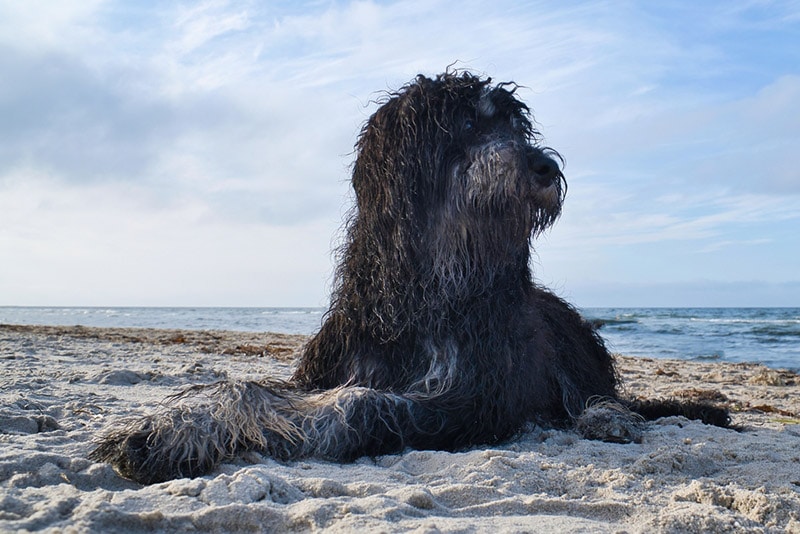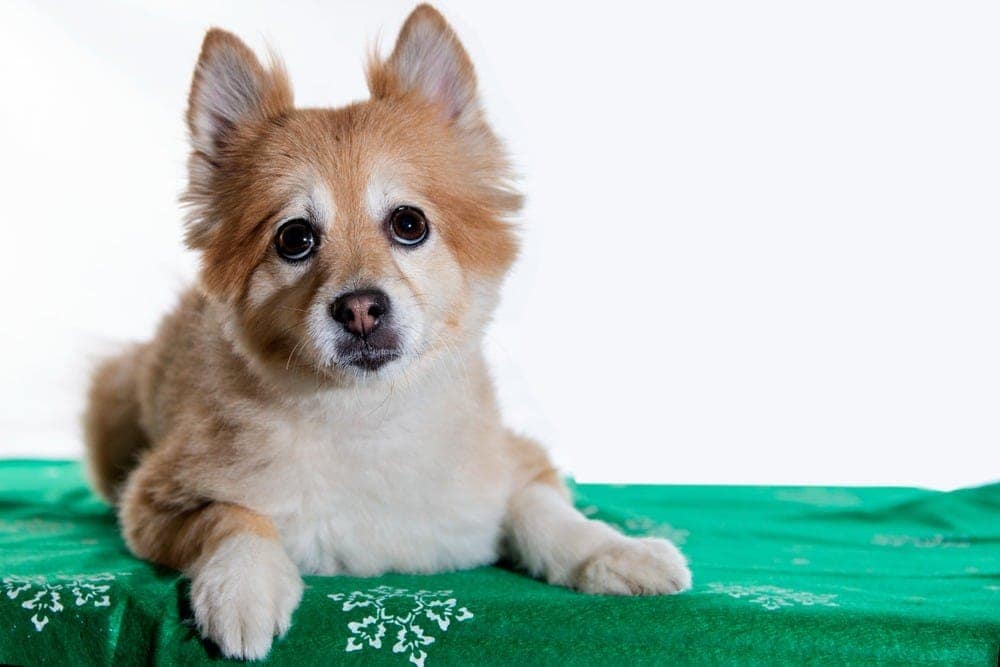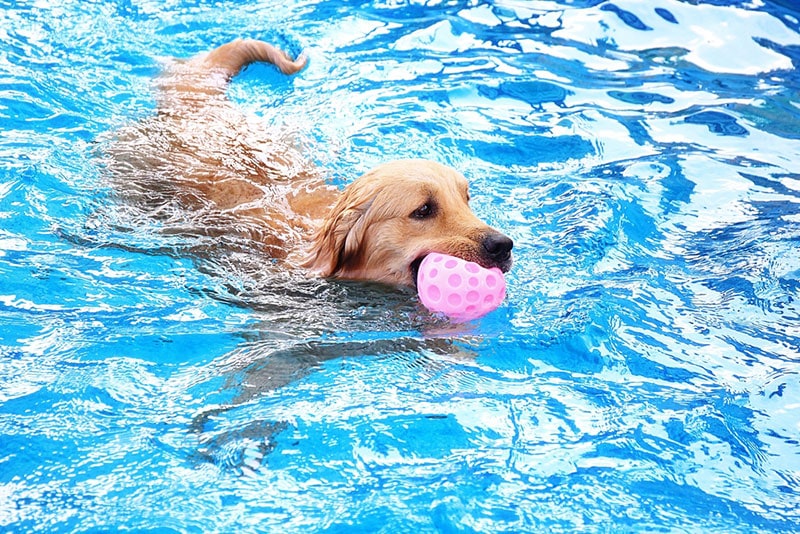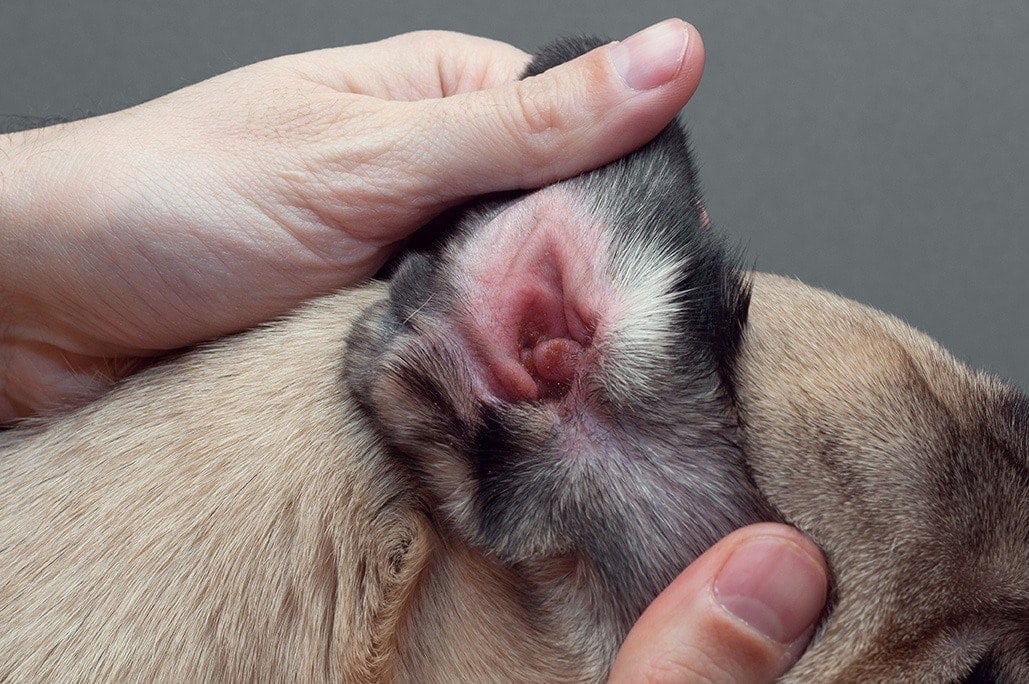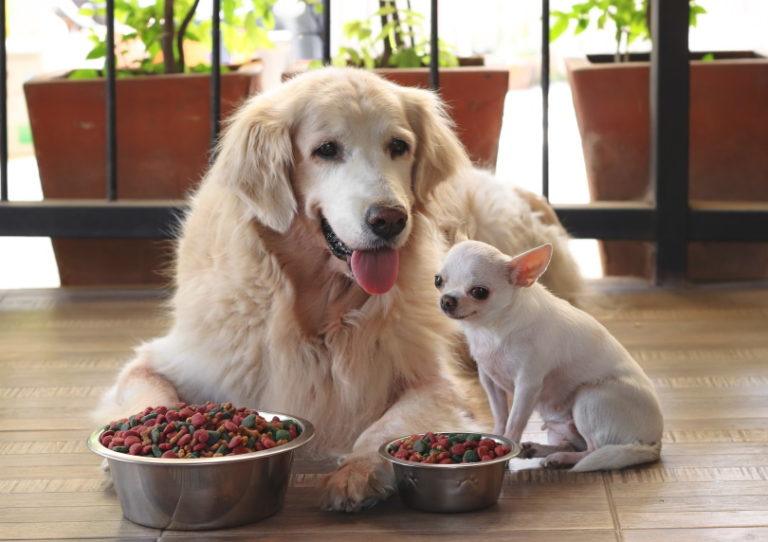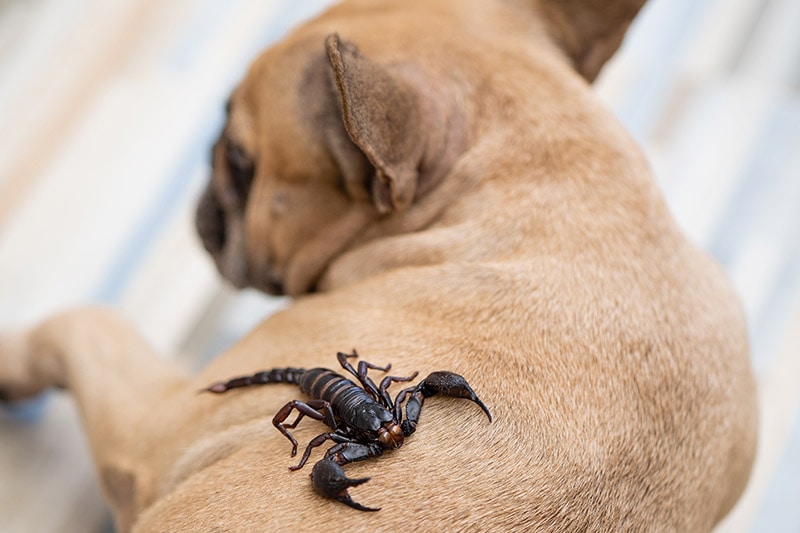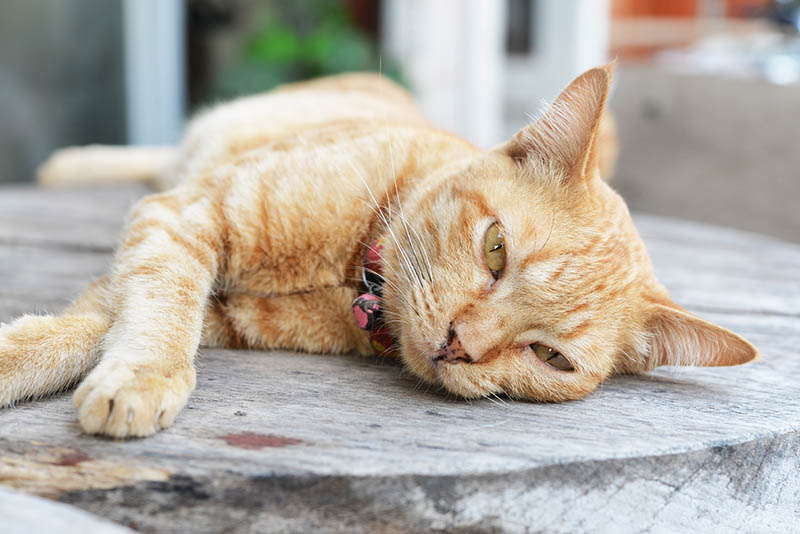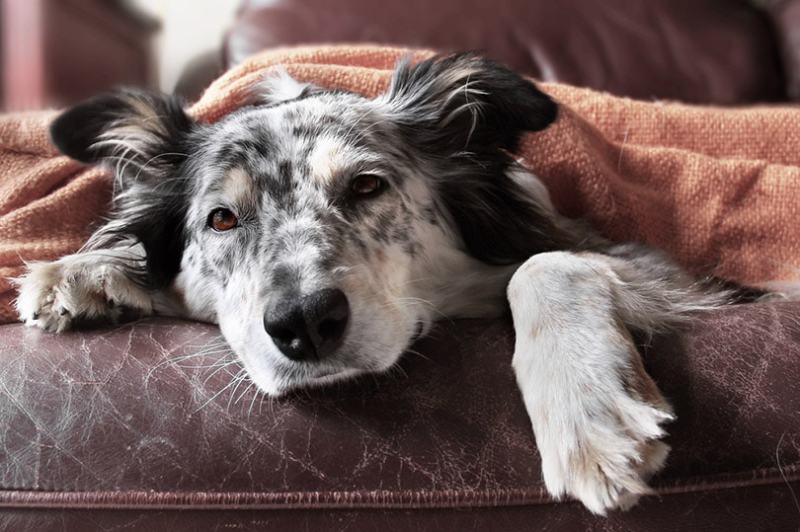15 Dog Breeds Prone to Anxiety & The Reason Behind It
Updated on

Picking the right dog breed for your household can be a difficult task. There are so many breeds to choose from, and some are not suited for just any home. Several breeds are prone to anxiety, which can be worsened by things like a sedentary lifestyle, boredom, and a high-stress environment. To help you decide on the perfect breed for you, check out these dog breeds that are prone to anxiety.
The 15 Dog Breeds Prone to Anxiety
1. Toy Poodle
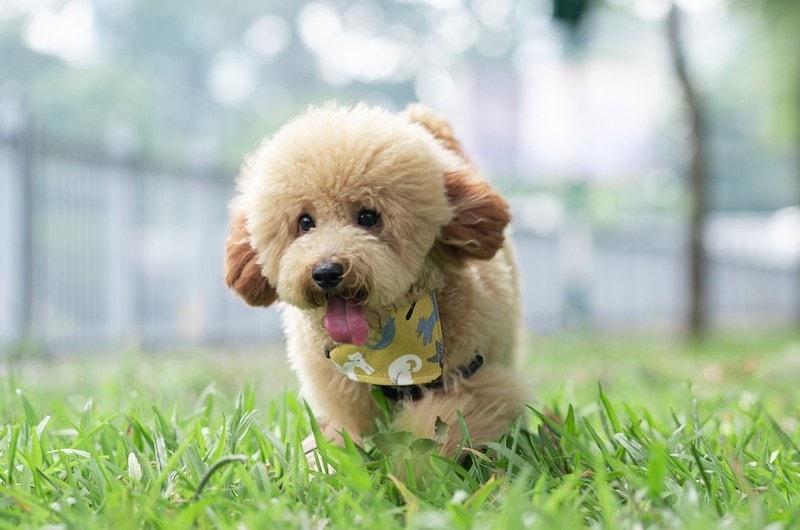
| Weight | 4–6 pounds |
| Height | Up to 10 inches |
| Temperament | Affectionate, confident, intelligent |
The Toy Poodle is a tiny dog breed that is considered by many to be little more than a lap dog. This breed is intelligent, though, but they can be stubborn, which can make training a challenge. They are affectionate, sweet dogs, especially with people they know well, and many Toy Poodles are suitable for homes with children, although their small size means they can be easily injured by rambunctious children.
Because of their intelligence, Toy Poodles can become bored quite easily, especially if they are treated like lap dogs without being provided outlets for their physical and mental energy. If not given these outlets, you can expect a Toy Poodle to become anxious.
2. Jack Russell Terrier

| Weight | 9–15 pounds |
| Height | 10–12 inches |
| Temperament | Lively, curious, attentive |
The Jack Russell Terrier, also sometimes just called the Russell Terrier, is the quintessential terrier breed. These curious dogs are very energetic and intelligent, and they have a strong instinct for chasing and catching small prey.
Although small in size, the Jack Russell believes itself to be a much larger dog, often bringing big dog-sized confidence with it. Without outlets for energy and instinct, these dogs can become extremely anxious, noisy, and destructive.
3. Cavalier King Charles Spaniel
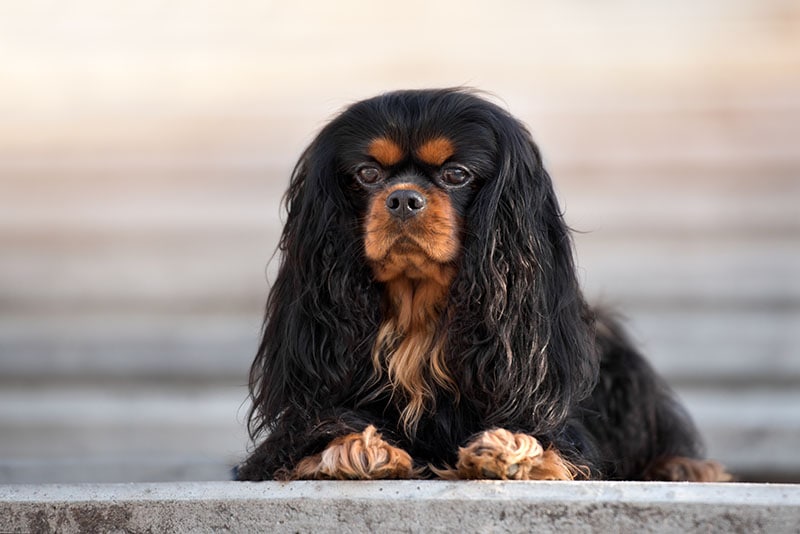
| Weight | 13–18 pounds |
| Height | 12–13 inches |
| Temperament | Sweet, gentle, loving |
The Cavalier King Charles Spaniel is an extremely popular small dog breed thanks to its sweet nature and big doe eyes. These pups are very loving and make great family dogs. They strike a perfect balance between the gentle nature of a toy breed and the athletic and driven nature of a spaniel.
They are suitable for busy homes, as well as homes where the family is gone during the day, and they are typically happy to adapt to the lifestyle of the household. Unfortunately, some Cavalier King Charles Spaniels are prone to separation anxiety.
4. Bichon Frise
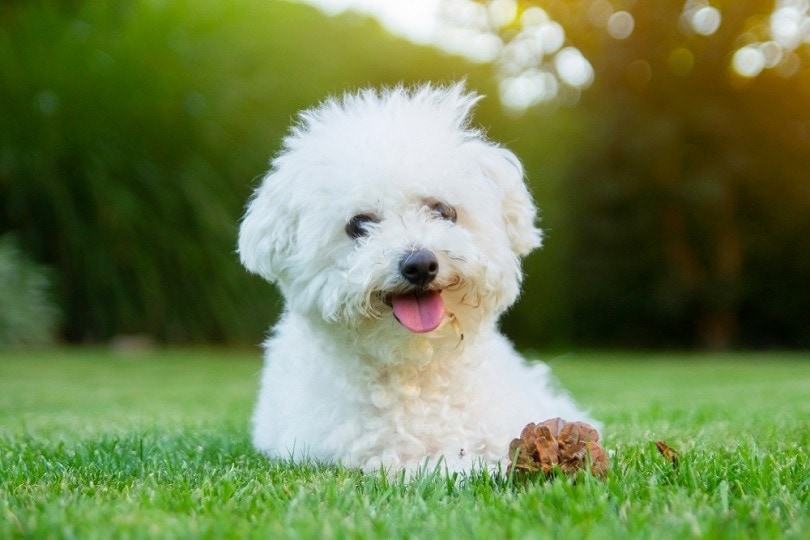
| Weight | 12–18 pounds |
| Height | 9.5–11.5 inches |
| Temperament | Curious, joyful, playful |
The Bichon Frise is an adorable dog breed that is known for its white, curly, fluffy coat. This breed is playful and curious, making them able to solve puzzles, learn games, and participate in dog sports.
The Bichon Frise seems to seize the day with a joyful exuberance that is matched by very few dog breeds. They are charming dogs that need outlets for their energy, often becoming anxious when energy is allowed to build up. They tend to be loving dogs that are good with people, but they may be initially wary of new people.
5. Miniature Schnauzer
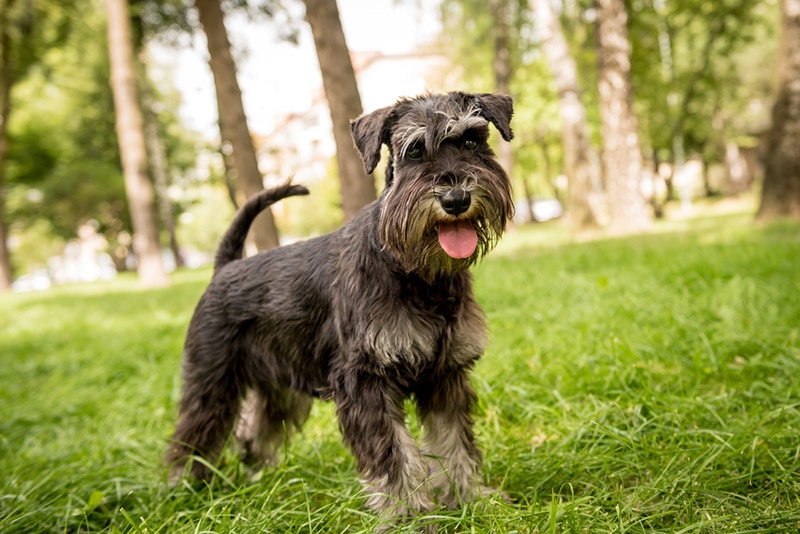
| Weight | 11–20 pounds |
| Height | 12–14 inches |
| Temperament | Loyal, intelligent, trainable |
The Miniature Schnauzer may be the smallest of the Schnauzer breeds, but these small dogs have big personalities. They are loyal dogs that have the desire to please their people, which often makes them trainable. They can be quite stubborn, though, so training should start early.
Although loving with their family, they are also protective dogs that may be very unsure of strangers. They also can develop a slew of behavioral issues, including excessive barking and destructive behaviors, if they aren’t provided with mental and physical stimulation daily.
6. Shetland Sheepdog
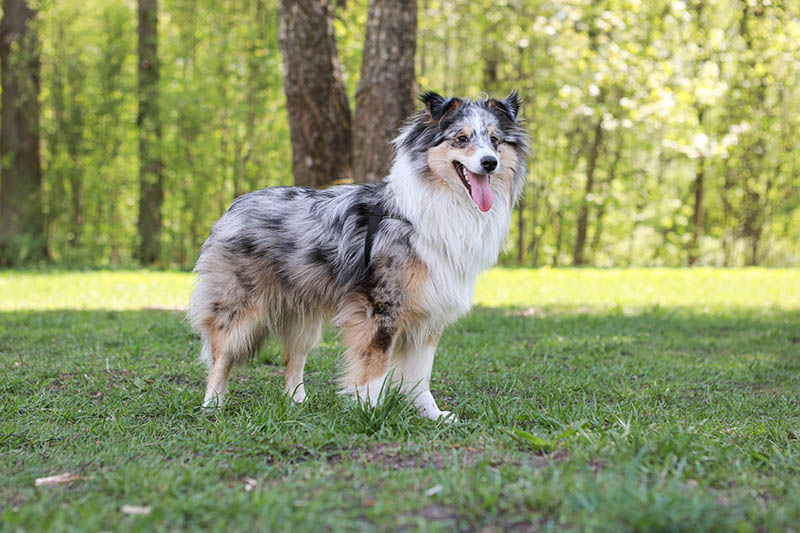
| Weight | 15–25 pounds |
| Height | 13–16 inches |
| Temperament | Alert, intelligent, perceptive |
The Shetland Sheepdog, also known as the Sheltie, is a small herding breed that is quite charming. This breed is alert and perceptive thanks to its herding instincts.
These dogs are loyal and eager to please, so they tend to be very attentive to their people. Like many herding breeds, though, the Sheltie needs an outlet for its energy. Without opportunities to burn energy and exercise its mind, a Sheltie may become destructive, jumpy, or nippy.
7. Lagotto Romagnolo
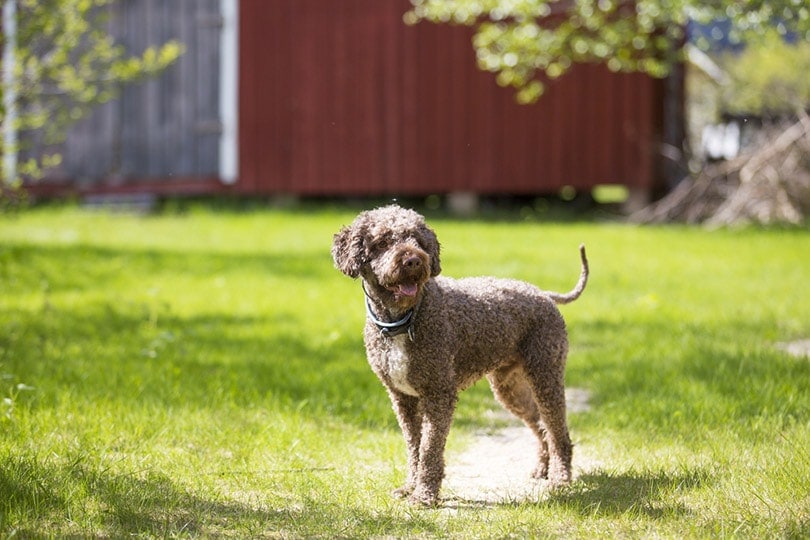
| Weight | 24–35 pounds |
| Height | 16–19 inches |
| Temperament | Alert, loving, undemanding |
The Lagotto Romagnolo is an uncommon dog breed that was originally bred to hunt truffles. As truffle hunting has gone out of style, people have taken to keeping these dogs as pets, but they aren’t the best pick for many homes, especially with inexperienced owners.
The Lagotto Romagnolo is consistently ranked among the most anxious dog breeds, and they tend to be extremely anxious around loud noises, including thunder, fireworks, gunshots, noisy children, and loud music. They are intelligent dogs that need a job, and without proper outlets for energy, the Lagotto Romagnolo can become extremely anxious and fearful.
8. Spanish Water Dog
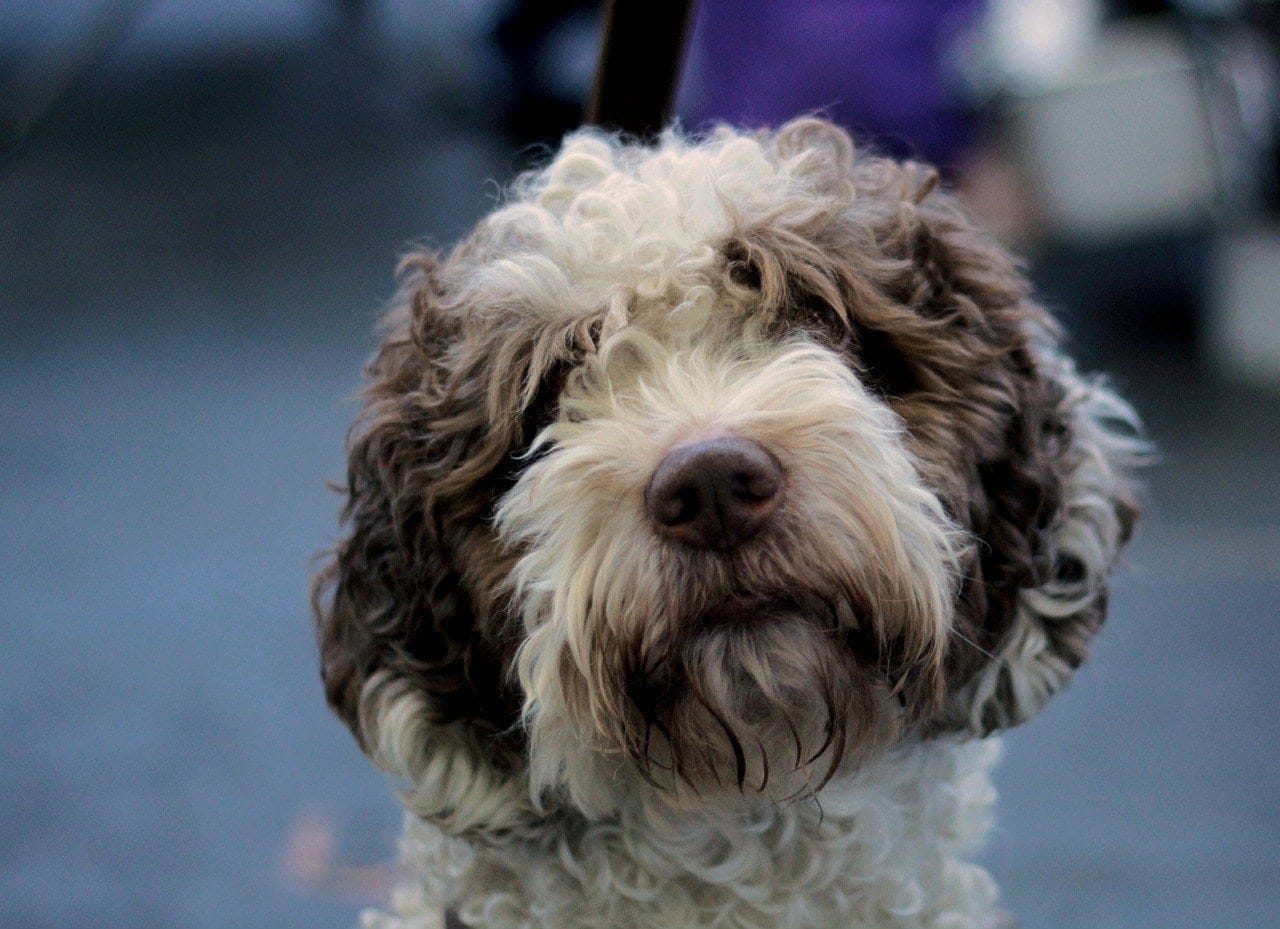
| Weight | 31–49 pounds |
| Height | 15.75–19.75 inches |
| Temperament | Energetic, eager to please, exuberant |
The Spanish Water Dog is a highly intelligent dog breed that is known for its trainability and eagerness to please. These dogs tend to be very attentive to their people, and they can be excellent companions for active people who will spend time every day doing something active with their dog. Without outlets for energy, though, the Spanish Water Dog may become anxious and clingy.
Thanks to its dual purpose as a herding and retrieving breed, the Spanish Water Dog seems to have no shortage of energy and willingness to get out and do something.
9. Soft-Coated Wheaten Terrier
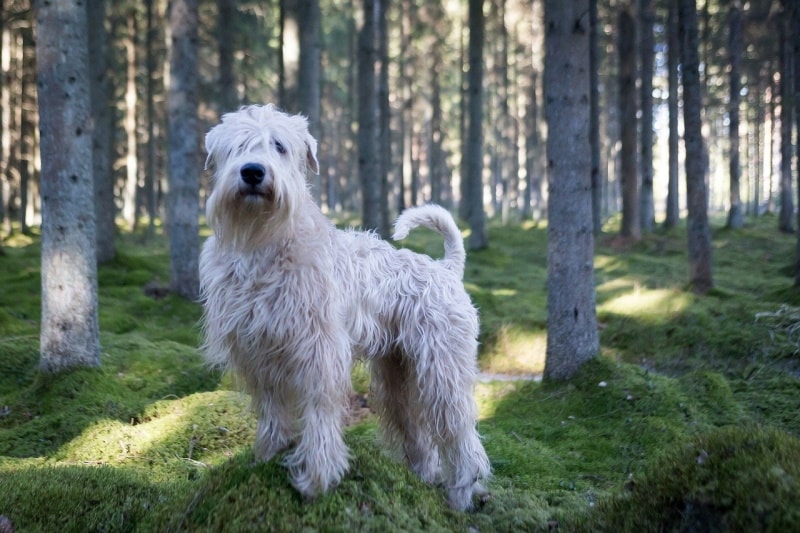
| Weight | 30–40 pounds |
| Height | 17–19 inches |
| Temperament | Loyal, joyful, outgoing |
The Soft Coated Wheaten Terrier is a breed known for its joyful temperament. These dogs tend to be outgoing and social, and they tend to be welcoming of new people. Like most terrier breeds, though, the Soft Coated Wheaten Terrier is strongly driven by instincts, and these muscular dogs need to burn energy to avoid anxiety and bad behavior. They do well with a job, but can also be quite content with games, puzzles, and daily physical activity to help burn excess energy.
10. Border Collie
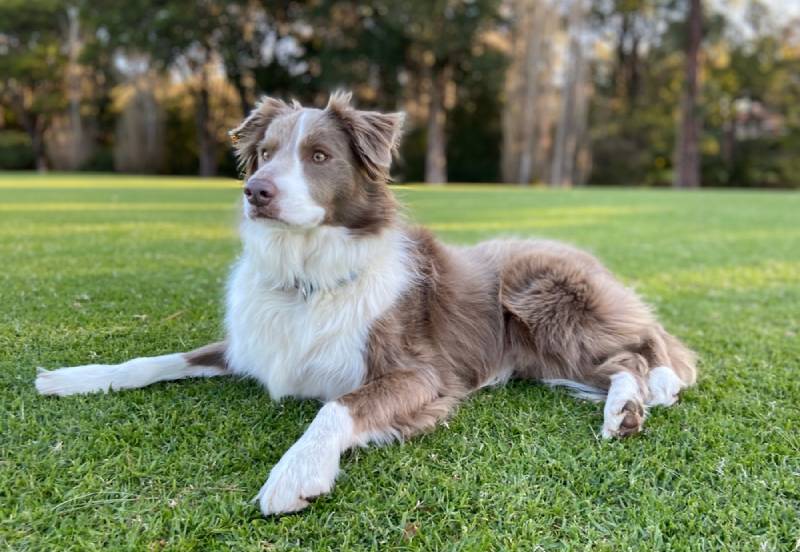
| Weight | 30–55 pounds |
| Height | 18–22 inches |
| Temperament | Extremely intelligent, focused, loyal |
The Border Collie is one of the most identifiable dog breeds, and they are popular pets. Many people have discovered through keeping Border Collies that these dogs are extremely high energy. They have very strong herding instincts, and without a job or outlet for energy, Border Collies may become anxious.
It’s also not uncommon for them to nip at the ankles of children and other pets in the home in an effort to herd them, and this behavior is more prevalent in dogs that aren’t being mentally or physically challenged.
11. Australian Shepherd
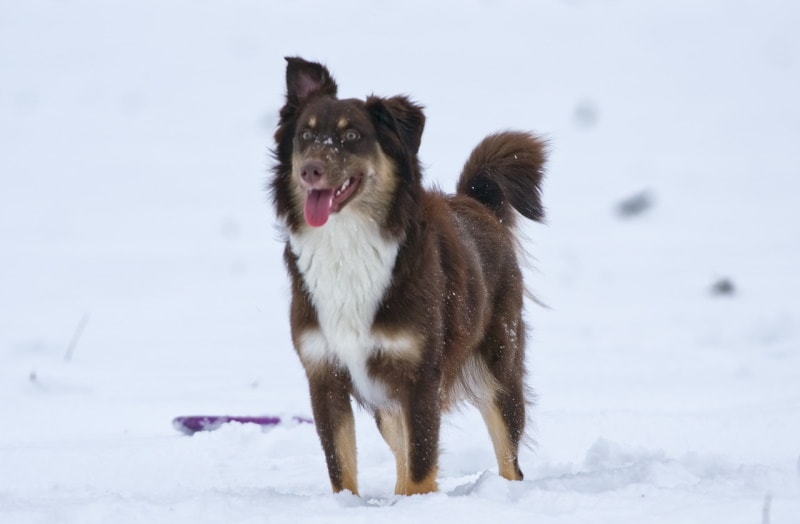
| Weight | 40–65 pounds |
| Height | 18–23 inches |
| Temperament | Happy, intelligent, focused |
The Australian Shepherd is another herding breed that has become quite popular as a family pet. They seem to adjust better to “normal” households than Border Collies do, but the Australian Shepherd still requires plenty of exercise and mental challenges to prevent anxiety and boredom.
This breed is muscular and eager to please, making them a great option for active households that spend a lot of time doing outdoor activities, as well as participating in dog sports.
12. German Shorthaired Pointer
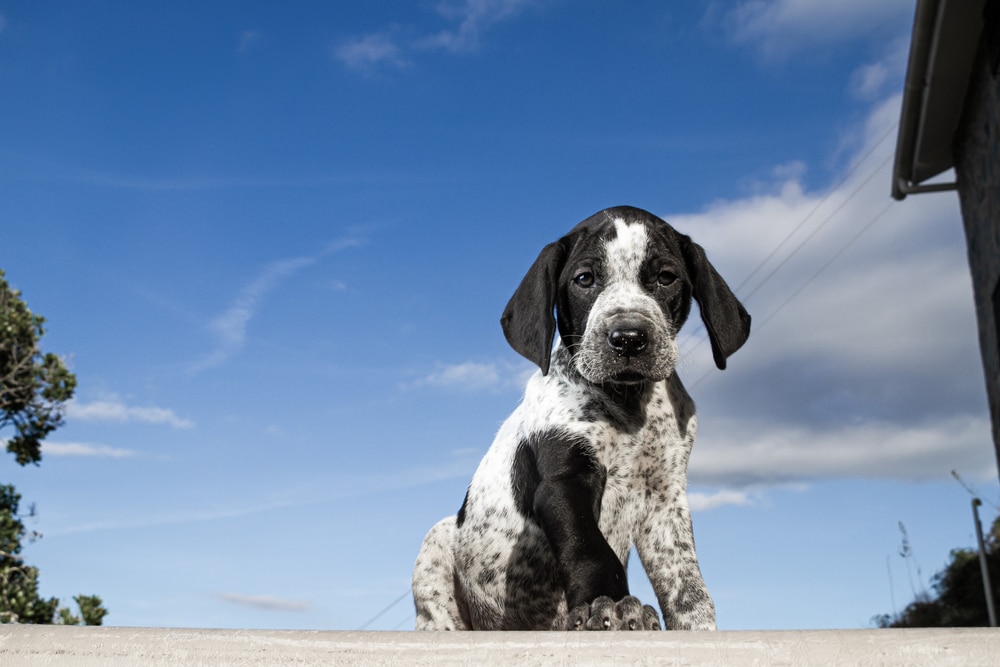
| Weight | 45–70 pounds |
| Height | 21–25 inches |
| Temperament | Social, eager to please, loyal |
The German Shorthaired Pointer is an intelligent hunting dog that has such a strong instinct for pointing that some people have captured videos of their dogs pointing at birds in pet stores. This breed can be a little bit silly, but it tends to be quite loyal and social.
Due to their high energy levels and strong instincts, the German Shorthaired Pointer may become anxious, noisy, and destructive when bored. It’s important to meet the mental and physical needs of this breed to keep it happy and healthy.
13. Labrador Retriever
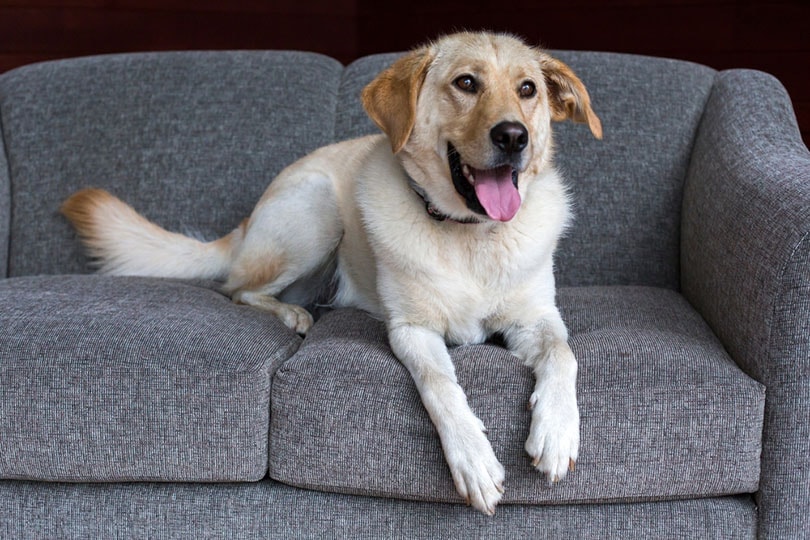
| Weight | 55–80 pounds |
| Height | 21.5–24.5 inches |
| Temperament | Goofy, social, trainable |
The Labrador Retriever has been ranked as the most popular dog breed in the US for over 30 years. While the breed standard of the Labrador Retriever calls for a dog that is intelligent, trainable, focused, and loyal, the popularity of the breed has led to rampant backyard breeding. This has led to an uptick in the number of anxious Labradors due to bad genetics and socialization, so it’s not totally uncommon to come across Labradors that are anxious, fearful of loud sounds, nippy, or that have a generally poorly balanced temperament.
14. German Shepherd
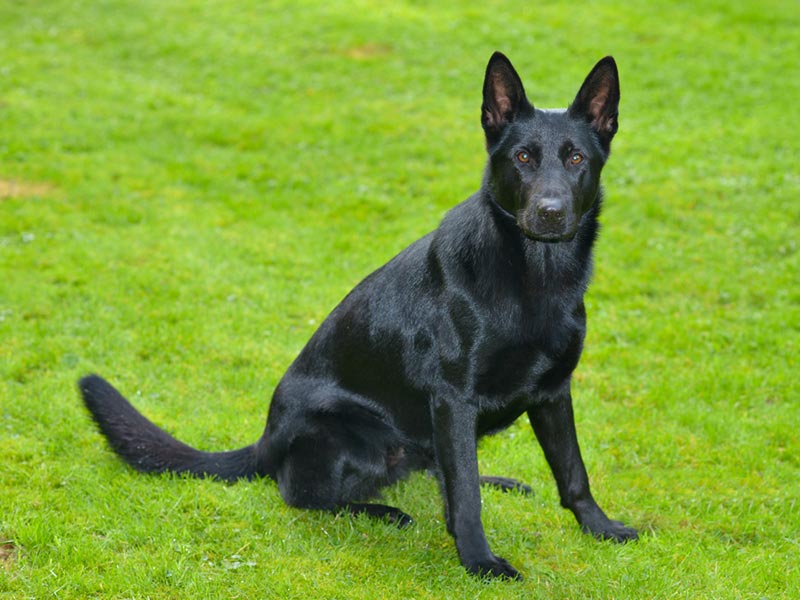
| Weight | 50–90 pounds |
| Height | 22–26 inches |
| Temperament | Bold, intelligent, trainable |
The German Shepherd is a popular dog breed for a variety of jobs, including police work, military work, guarding, drug and bomb sniffing, and search and rescue or cadaver searches.
This is a versatile breed that many people love for its loyalty and trainable nature. German Shepherds are not a suitable dog breed for beginner dog owners, though. These strong-willed dogs can be a challenge, and their potential for wariness with strangers can lead to extreme anxiety.
15. Mixed Breeds
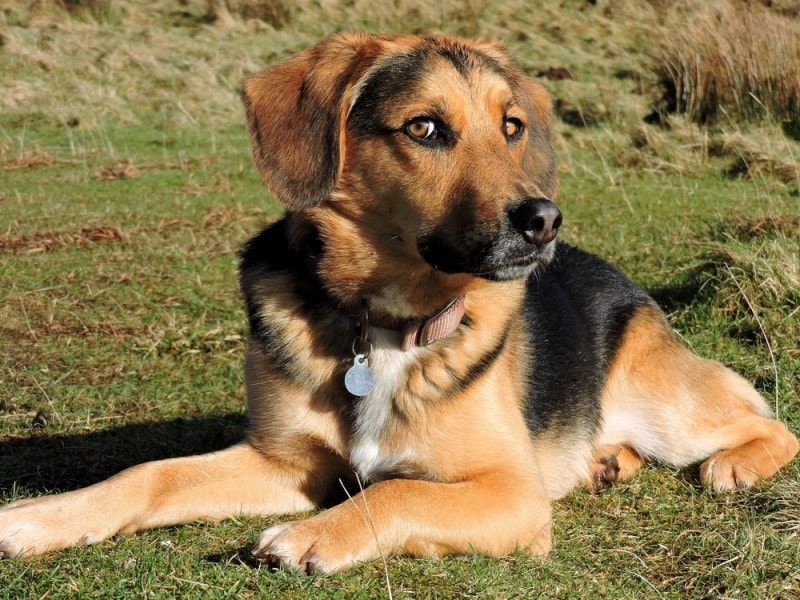
| Weight | Variable |
| Height | Variable |
| Temperament | Variable |
In multiple studies of anxiety in dogs, mixed-breed dogs have managed to show up. This is due to the high level of diversity among mixed-breed dogs, as well as their highly varied backgrounds and environments.
There are a lot of conditions that may lead to anxiety in mixed breeds, especially those from shelters, rescues, and backyard breeding operations. Abandonment, shelter environments, abuse, lack of socialization, hoarding situations, and other poor environments and upbringings can lead to a slew of behavioral and anxiety-related problems in mixed-breed dogs.
Conclusion
It’s important to select a dog breed that is suitable for your household, and ending up with an anxious dog breed does come with a specific set of challenges that not everyone is ready to take on. If you get a chance, spend time with the breeds you’re considering before choosing to bring a dog home. This will help you get a better idea of the training, socialization, and exercise needs of any breed you’re considering.
Featured Image Credit: Zontica, Shutterstock

